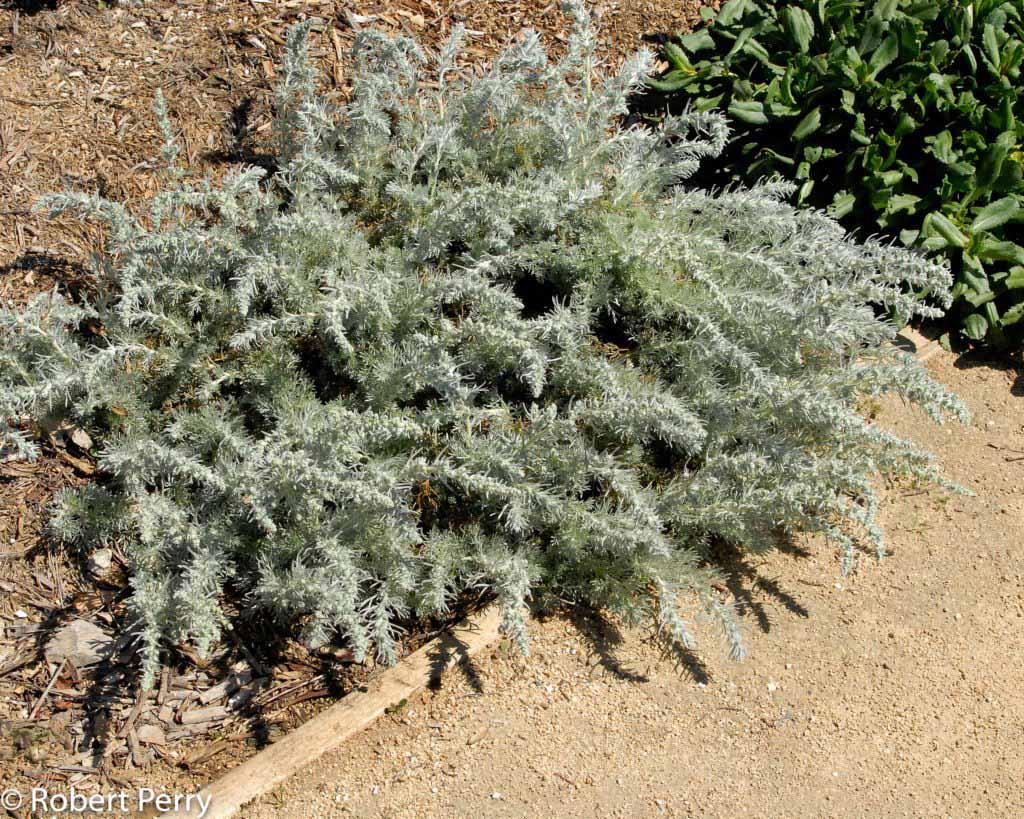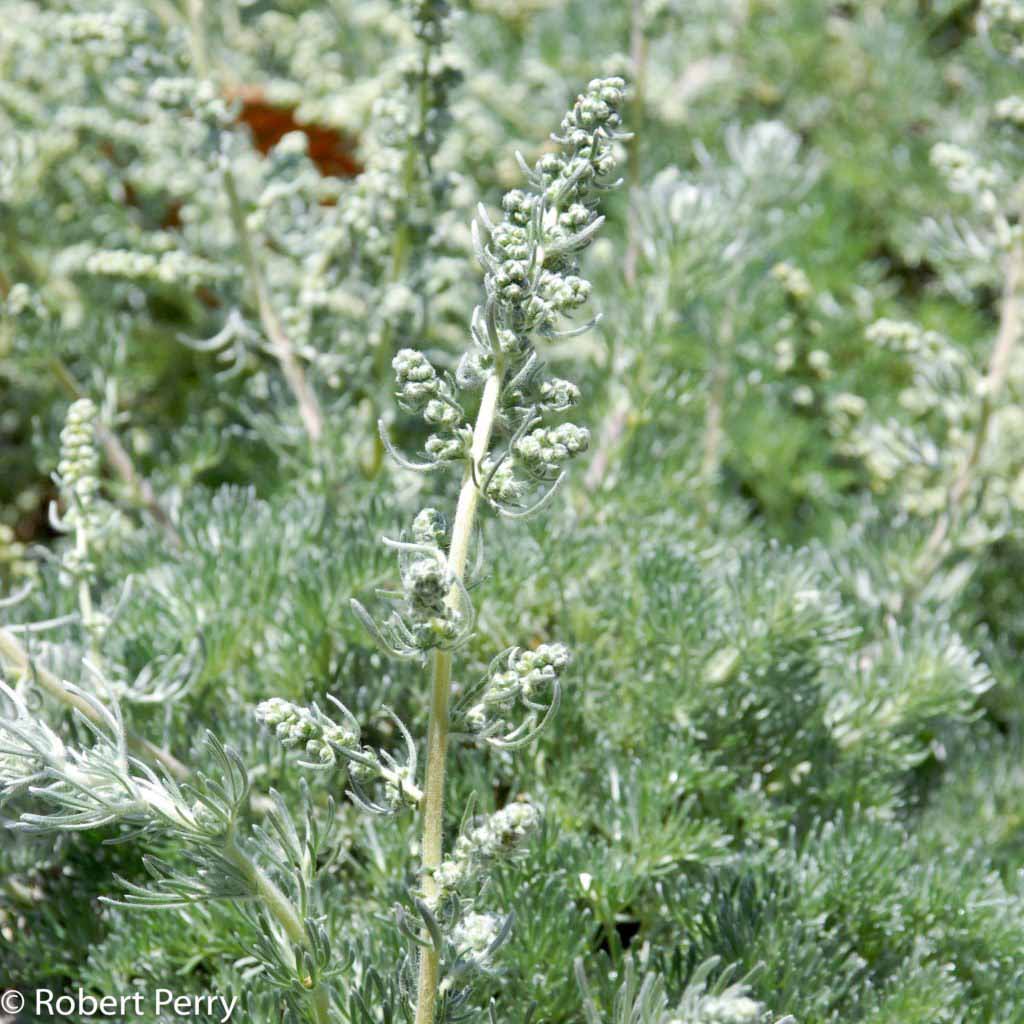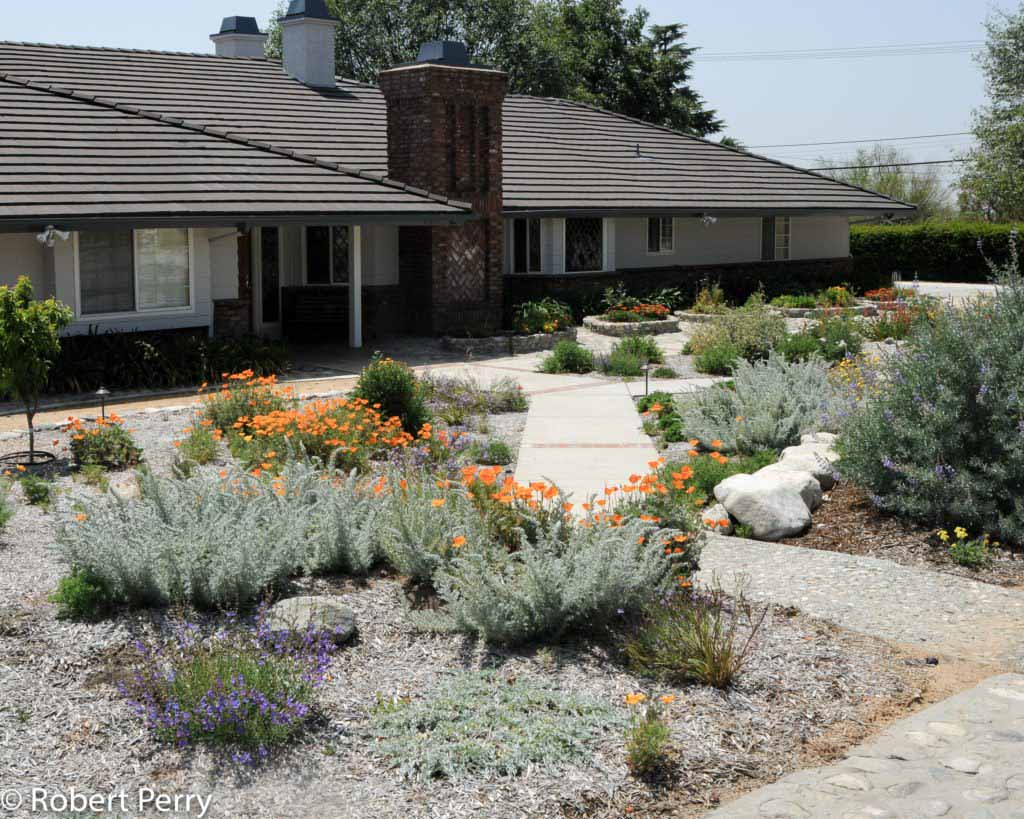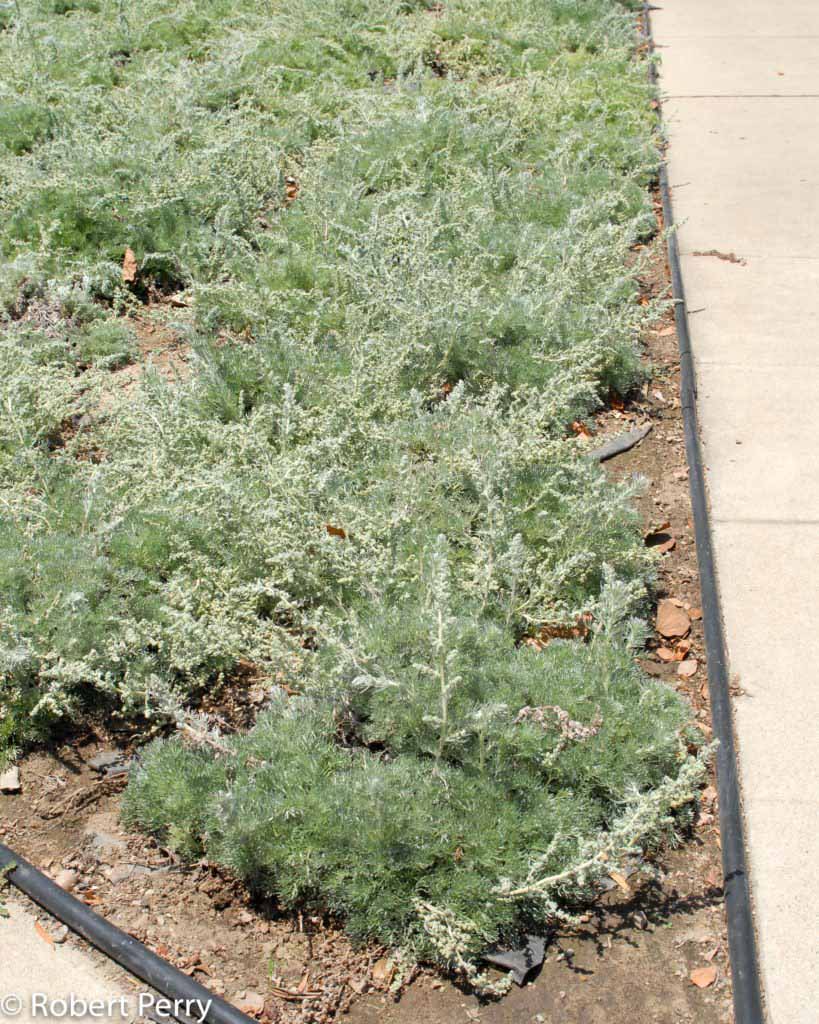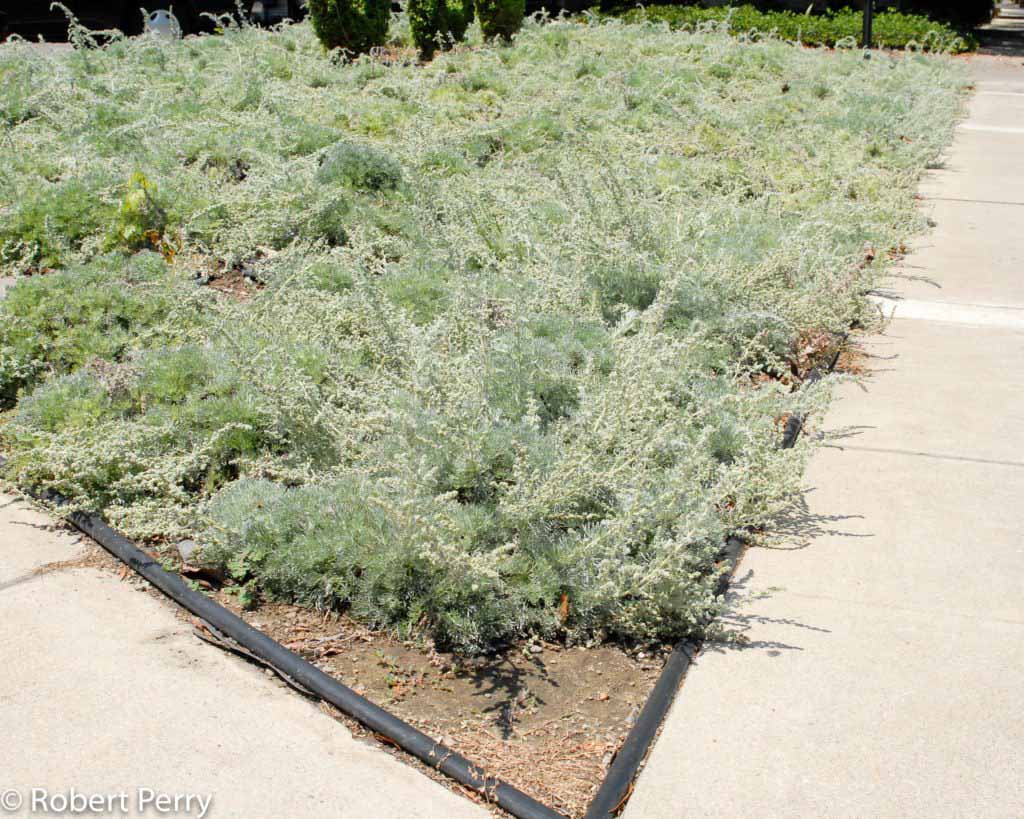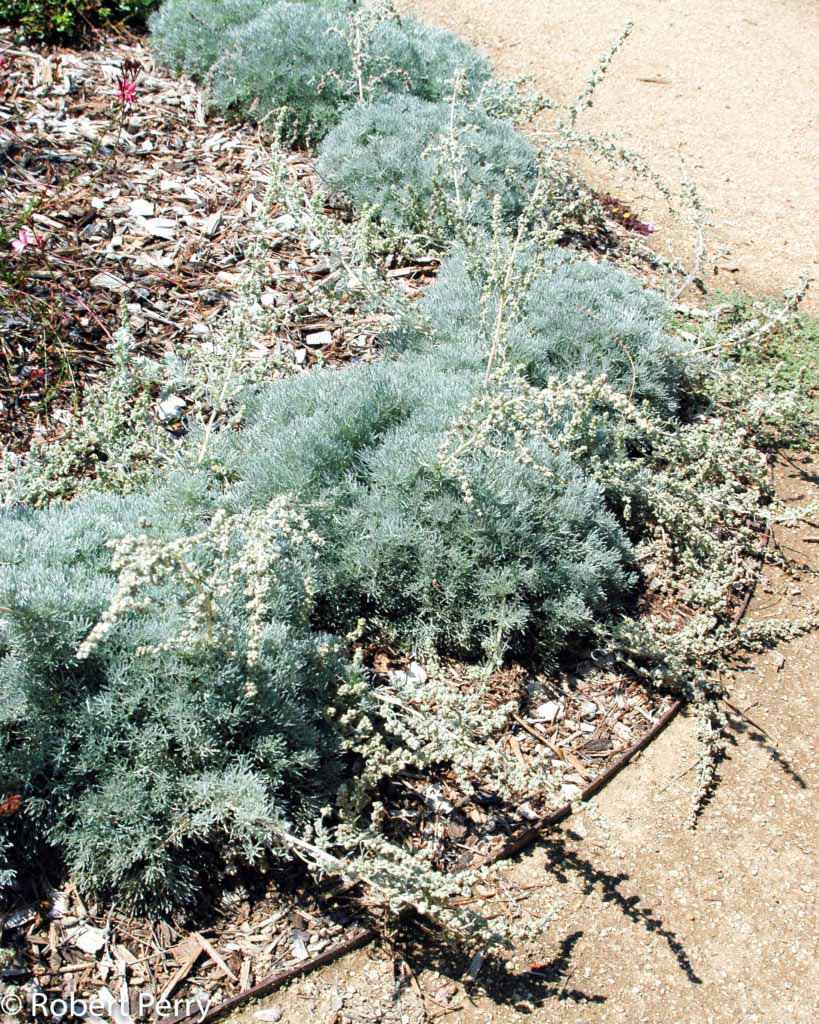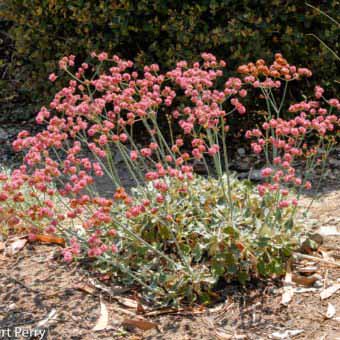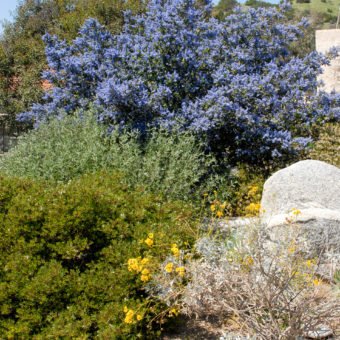The Sandhill sage grows best in Inland Empire gardens when planted in areas that receive afternoon shade and when sustained with periodic summer water. The chart shown below provides a recommended baseline guide to the monthly irrigation schedule and volume of supplemental water needed to maintain healthy growth throughout the average year. It should be noted there are several months indicated by an asterisk (*) when winter rains can provide sufficient moisture and irrigation is not needed. The high and low range of moisture indicates it can grow with varying amounts of water and you should make irrigation adjustments based on field observations of growth and character.
| |
Jan* |
Feb* |
Mar* |
Apr |
May |
Jun |
Jul |
Aug |
Sep |
Oct |
Nov* |
Dec* |
| Runs per Month |
0x to 2x |
0x to 2x |
0x to 2x |
1x |
1x |
1x |
1x |
1x |
1x |
1x |
0x to 2x |
0x to 2x |
| Inches per Run |
1″ |
1″ |
1″ |
1″ |
1″ |
1″ |
1″ |
1″ |
1″ |
1″ |
1″ |
1″ |
| |
| Inches per Month |
0″ to 2″ |
0″ to 2″ |
0″ to 2″ |
1″ |
1″ |
1″ |
1″ |
1″ |
1″ |
1″ |
0″ to 2″ |
0″ to 2″ |
Range of supplemental summer water: 7"
Range of supplemental winter water: 0"-10"
| |
0″-2″ |
0″-2″ |
0″-2″ |
1″ |
1″ |
1″ |
1″ |
1″ |
1″ |
1″ |
0″-2″ |
0″-2″ |
| |
Jan* |
Feb* |
Mar* |
Apr |
May |
Jun |
Jul |
Aug |
Sep |
Oct |
Nov* |
Dec* |
For more information on how to use this Irrigation Schedule and Graph, follow this link.
For information how to calculate your irrigation system’s schedule and precipitation rate, please follow this link.
Cut back in the Fall as hard as needed to prevent plant from getting too “woody” over time (2). Pinch growth of young plants, if desired, to encourage denser branching. The species Artemisia pycnocephala performs better on the coast, but a common cultivar “David’s Choice” does perform well inland, especially in afternoon shade or light overhead shade (3, S).
References